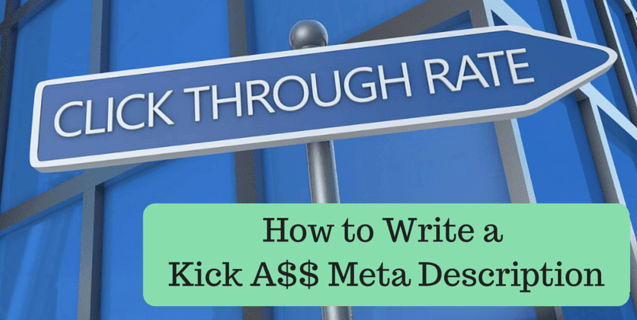Although Google does not factor meta descriptions into the page’s ranking, meta descriptions still pack a mighty punch when it comes to your click-through rate (CTR) in SERPs. But with a mere 155 charcters to work with how are you going to persuade searchers to click your link and visit your web page?
Let’s find out what Meta Tag Man has to say about how to write a meta description that actually gets clicks.
Know What Meta Descriptions Are All About
When speaking of a “meta description”, we’re referring to the snippet of info that shows up directly below the link (or Title Tag) of a search result. They are included in SERPs to give searchers a quick explanation of the web page’s content.
For the most part, adding an meta description to your page is pretty easy. For example, WordPress SEO by Yoast is a simple plugin that can be installed to help you optimize your posts, and will even count the characters in your meta description for you.
But for you fancy types out there, you can add one original meta description to each page of your website/blog by including the corresponding HTML attributes on the backend of the page. Moz has a great example of the meta description HTML code.
Use Alphanumeric Characters Only
Google will truncate a meta description right at the point that it uses double-quotes. To stay on the safe side, just don’t use anything but alphanumeric characters. And if you absolutely have to use a quotation mark in your meta description, change to a single, lonely quote to prevent truncation.
Read the Meta Descriptions You’re Competing With
Before you begin writing, do some SEO research. Simply perform a search for your page’s primary keyword, and read the meta descriptions that show up in the results. These meta descriptions are your competition. When you write your own, do so in this context, because to win the most clicks, your description needs to outshine theirs.
Remember to Get the Character Count Right
Don’t go writing a paragraph. Limit yourself to writing one or two sentences per description when brainstorming ideas (maybe three if your sentences are short.) Once you have a kick-ass description, edit it to fall between 150 and 160 characters (including spaces) for your desktop visitors. If your description goes beyond 160 characters, it will likely be truncated by Google.
In fact if you can get it even shorter than 150-160 characters, that is great for mobile. However, if your website is responsive and/or mobile, you might even consider writing separate meta descriptions that are optimized for mobile devices. There is physically less room for meta descriptions on a mobile site than on a desktop site, so meta descriptions should be somewhere between 115-120 words.
Use the Page’s Primary Keyword(s) in the Beginning
Although Google doesn’t use meta descriptions to determine PageRank, keywords are still important to use right up front for two main reasons. 1) Users will most likely be looking for their search query in the results, or a version of it. And 2) search engines typically bold matched keywords in the meta description, creating an even greater opportunity for you to catch the searcher’s eye.
Describe the Contents of the Page
Starting with your keyword near the front, write one or two sentences that simply explain what your web page offers. Keep two tips in mind: 1) Be somewhat specific, but also generic enough that the description fits into the character limit. 2) Remember, Google doesn’t like duplicate content, so do not use the same meta description for multiple pages. Describe each page in a way that differentiates it from every other page on your site.
Give Readers a Reason to Click
Once you’ve written a basic description of the page, shape that description into a solution. This is your chance to give searchers a reward for clicking through to your website. Do this by considering what someone is really looking for when they perform a search for your keyword, edit your meta description to assure them that your page provides it, and tell them what you want them to do next.
For example, if my first draft reads…
“Company A provides professional services in the southern region of the State. Our most popular services include service one, service two, and service three.”
You might consider changing it to …
“Looking for low-cost professional services only minutes away? Contact Local Company A, specializing in professional services one, two and three.”
Example one is a bit passive and simply give the reader some sort of idea of what Company A does. The second example is more direct; listing the services offered, where the service is located, and what the reader should do next to get that service.
Edit Again
Once you’ve finished optimizing your kick-ass meta description, forget about it for the day and look at it again tomorrow with fresh eyes. Can you tweak the language or punctuation to improve clarity or make the description easier to read? If yes, great! If not, great! Your kick-ass meta description is complete.


